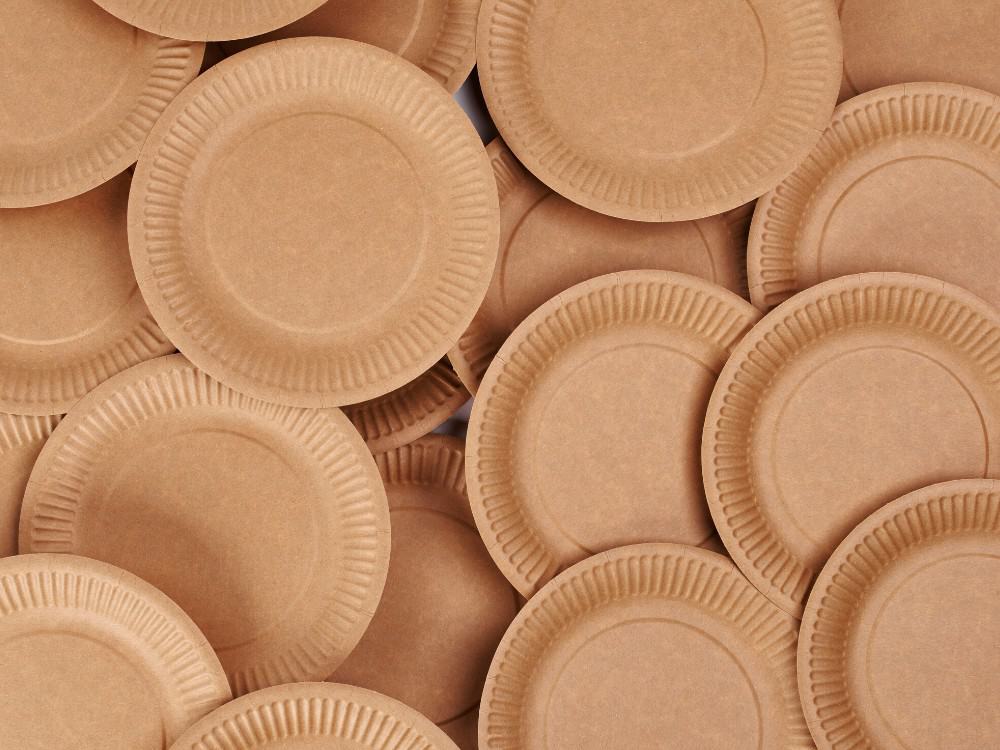Paper plates seem so convenient, but are they secretly harming the planet?
Let’s investigate whether these throwaway dishes are bad for the environment.
Understanding the eco-impact can help you make informed choices.
Are Paper Plates Bad For The Environment?

Standard paper plates are made from wood pulp and may contain plastic coatings that make them non-recyclable and non-biodegradable.
They decompose slowly in landfills, emitting potent greenhouse gases like methane.
Producing paper plates also strains natural resources like trees, water, and energy.
There are some eco-friendly alternatives available like unlined recycled paper plates.
But in general, paper plates have a substantial environmental impact considering their full life cycle.
Limiting paper plate usage and utilizing reusables when possible is the most sustainable option.
Key Points
- Paper plates are often coated in plastic, making them non-recyclable
- They decompose slowly in landfills, releasing methane gas
- Manufacturing paper plates contribute to deforestation
What Are Paper Plates Made Of?
Paper plates are generally made from wood pulp, though some contain additives like petroleum-based plastic coatings.
These coatings make them non-compostable and non-recyclable.
Plain paper plates without plastic linings can be better for the environment.
However, they may still contain chemicals from the paper-making process. Opting for unbleached paper products avoids these contaminants.
Do Paper Plates Decompose?
On their own, plain paper plates take 2-4 weeks to decompose.
However, most paper plates are contaminated with food residue, making them non-recyclable.
When sent to landfills, paper products decompose very slowly due to a lack of air circulation.
Paper plates can take over a month to break down in landfill conditions.
This contributes to methane emissions, a potent greenhouse gas fueling climate change.
What Is the Carbon Footprint of Paper Plates?
The carbon footprint considers the emissions generated during the full life cycle of a product.
For paper plates, this includes:
Raw material extraction – Trees cut down for wood pulp
The manufacturing process – Energy used in production
Transportation – Trucking of finished goods
Decomposition and waste – Methane from landfills
Collectively, paper plate production contributes to deforestation, pollution, and global warming.
Their carbon footprint can be substantially reduced by using renewable materials and energy.
Do Paper Plates Waste Resources?
Yes, single-use paper plates are resource intensive.
Producing and distributing billions of paper plates consumes:
Wood pulp – Cutting down trees
Water – For processing wood pulp
Fuel – Manufacturing and transportation
Landfill space – Slow decomposition
Washing reusables may seem wasteful. However, the entire life cycle of disposables uses more resources overall.
What About Recycled Paper Plates?
Recycled paper plates have a smaller eco-footprint.
They generate less waste compared to tree-sourced, single-use plates.
However, recycled paper plates are often coated in plastic, making them non-recyclable.
Opt for unlined, recycled paper products whenever possible.
Are There Eco-Friendly Alternatives?

Yes! There are several greener options compared to conventional paper plates:
Unlined recycled paper plates – No plastic coatings
Bamboo plates – Made from fast-growing bamboo
Leaf plates – Made from fallen leaves or wheat stalks
Reusable plastic plates – Washable and durable
Avoid plastic-coated paper plates labeled as “compostable.”
Most commercial composting facilities cannot process these.
Should You Use Paper Plates?
Paper plates are convenient, but convenience often comes at an environmental cost.
Using reusables is ideal, but paper plates can work in some scenarios if you choose eco-conscious options and reduce overall usage.
When selecting paper plates, opt for unlined, recycled paper products free of plastic coatings.
Avoid excessive use of paper plates, which leads to more waste and higher carbon emissions.
Consider reusable plates when practical.
With mindful consumption habits, we can enjoy the occasional paper plate while still caring for the planet!
Key Takeaways:
- Standard paper plates are made from wood pulp and may contain plastic coatings
- They take a long time to decompose and release methane in landfills
- Production of paper plates uses substantial natural resources
- Recycled and eco-friendly paper plates are better options
- Limit usage of paper plates and use reusables when possible
FAQ
What Materials Are Used To Make Paper Plates?
Most paper plates contain wood pulp from trees. Many also include plastic coatings and dyes which make them non-recyclable. Opting for plain, unbleached paper avoids additional manufacturing contaminants.
How Do Paper Plates Affect Climate Change?
When paper plates decompose in landfills, they release methane, a potent greenhouse gas. Methane from landfills contributes greatly to global warming and climate change.
What Is An Eco-Friendly Alternative To Paper Plates?
Some eco-friendly options include unlined recycled paper plates, bamboo plates, reusable plastic plates, and leaf plates made from fallen leaves or wheat stalks. Avoid plastic-coated paper plates labeled as “compostable.”
At GreenChiCafe, we are passionate about the environment and our natural world.
Please check out our website for more content on leading an eco-conscious lifestyle.
